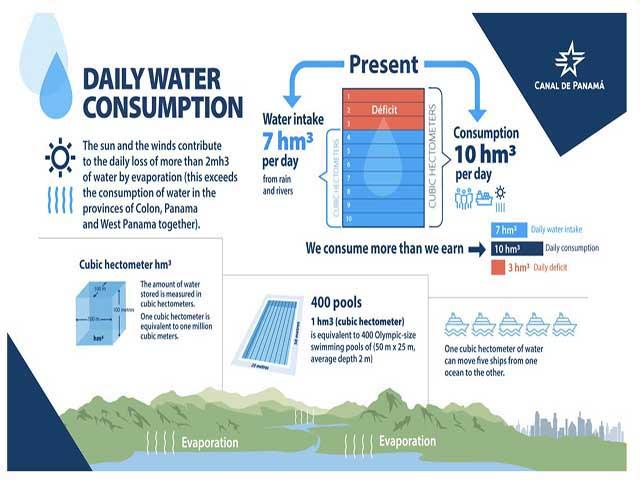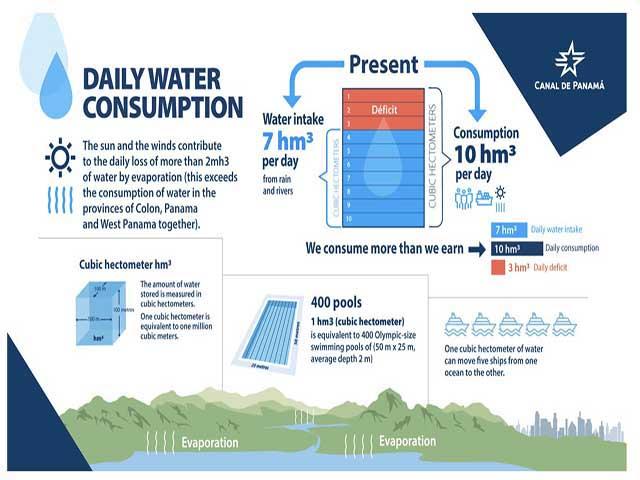Market Matters Blog
New Restrictions for Panama Canal; US Rivers Still Face Low Water Levels
New restrictions have been put in place for transit through the Panama Canal as the low water crisis continues to plague ship movement there. On Sept. 29, the Panama Canal Authority Vice Presidency for Operations released an advisory to shipping stating: "Due to the ongoing water crisis currently experienced in the Canal watershed, the Panama Canal Authority (ACP) finds it necessary to implement additional changes to the Transit Reservation System rules, based on the reduction in daily transit capacity.
"Therefore, effective Nov. 1, 2023, a new booking condition will be implemented, based on the adjusted capacity of 31 vessels per day. Under this new condition, named Booking Condition 5, a maximum of 30 booking slots will be offered, 8 in the Neopanamax locks and 22 in the Panamax locks."
American Commercial Barge Line said on their website on Oct. 6, "Due to the lack of rainwater, there is significant delay to transit through the Panama Canal. Both north and southbound vessels are multiple days behind schedule, with smaller vessels averaging almost two weeks' worth of delay. In turn, expecting a delay to berthing schedules in the Gulf: NOLA, Mobile, Houston."
The Panama Canal relies on an artificial lake, Gatun Lake, which is 85 feet above sea level, and fills up with fresh water to fill the locks in the Panama Canal with fresh water needed to raise vessels as they pass from the Pacific Ocean to the Atlantic Ocean. As of Oct. 7, the lake was at 80 feet, below the 85 feet needed to reach the level of Gatun Lake.
https://evtms-rpts.pancanal.com/…
Canal authorities expect the drought to persist into 2024, which could be even more detrimental to shipping and likely mean more restrictions.
LOW WATER PERSISTS IN U.S. RIVER SYSTEM
P[L1] D[0x0] M[300x250] OOP[F] ADUNIT[] T[]
While the low water conditions persist in the Mississippi, Ohio and Illinois Rivers, some good news was reported by the U.S. Army Corps of Engineers (USACE) New Orleans. The saltwater wedge that had been moving at a fast pace and heading towards New Orleans, has stalled at mile 69.4, about six miles south of Belle Chasse.
Construction continues to increase the existing underwater sill near Myrtle Grove from a depth of -55 feet to a depth of -30 feet. A 620-foot-wide navigation lane will be kept to a depth of -55 feet to ensure deep-draft shipping continues along the nation's busiest inland waterway, noted the Corps, and work is expected to finish by Oct. 12.
On Oct. 2, the USACE said in a press release on their website that they began barging fresh river water to Plaquemines Parish water treatment facilities. "River barges are filled with water from an upstream location and transported down river to be offloaded to onsite reservoirs at requesting water treatment facilities. The initial barge load of 500,000 gallons arrived at the Port Sulphur Water Treatment Facility at approximately 7:00 p.m. Sunday, Oct. 1, 2023. This water can be mixed with water at the intake to dilute salinity content to levels safe for water treatment. Additional barges will be delivered as the need for upriver fresh water occurs."
Meanwhile, the Lower Ohio and Mississippi Rivers continue to have safety restrictions because of the low water levels. Tow sizes and drafts are still reduced where water levels are too low to allow safe passage. While there had been a rash of groundings recently, thanks to the dredges, that frequency has slowed. Over the weekend, however, another grounding occurred at MM 925 and as of Monday morning, the boats had been cleared and the U.S. Coast Guard will announce when they open the channel and then stagger northbound (NBD) and southbound (SBD) until traffic is cleared.
American Commercial Barge Line noted on their website on Oct. 6 that "St. Louis loading drafts reduced, approximately 32% or 500-700 tons per barge below normal capacity. Tow size has been reduced to 4 widths St. Louis to Cairo, a 5-barge or 20% reduction. Ohio River SBD loading drafts reduced by approximately 12% or 200 tons per barge. Loading drafts remain 20% reduced NBD Gulf to Cairo; 20% reduction SBD Cairo to Gulf. Also note a 16% reduction SBD from Lake Providence to the Gulf."
On a positive note, barge freight has settled back and that has enabled river terminals to post somewhat improved basis levels as farmers continue to harvest soybeans. However, the missing piece in that is the slow pace of export business. The Oct. 5 weekly export sales and shipments report showed, for the week ending Sept. 28, an increase of 29.7 million bushels (808,500 mt) of soybean export sales in 2023-24, but soybean sales commitments are down 32% versus one year ago. Also, weekly export shipments of 24.7 mb were below the 35.4 mb needed each week to achieve USDA's export estimate of 1.790 bb in 2023-24.
There is a chance some rain may be coming to help water levels. John Baranick, DTN Ag Meteorologist, said, "A storm system mid-late week is shaping up to be a bit of a doozy. A band of widespread heavy rain is forecast from NE/SD through the Great Lakes. Likely to disrupt harvest with this one, we've been building soil moisture over the last couple of weeks so this has a better chance at producing delays. If this storm tracks a bit to the south, the heavy rain would go more through the Ohio Valley, which would help the rivers. The current track wouldn't be much help though."
Let's hope that rain does come because, according to the NWS Mississippi River at Memphis Hydrograph Monday, Oct.9, the river is currently at -10.25 feet and is forecast to move to -11 feet on Oct. 14, breaking the new record of -10.97 feet set on 9/14/2023.
Link to customer notifications on Panama Cana restrictions: https://pancanal.com/…
Link to vessel statistics and transit backlog in the Panama Cana1: https://pancanal.com/…
Link to USACE saltwater wedge information: https://www.mvn.usace.army.mil/…
Link to USACE New Orleans showing the expected timeline for the saltwater wedge movement: https://www.mvn.usace.army.mil/…
Link to Mississippi River levels in Memphis: https://water.weather.gov/…
Mary Kennedy can be reached at Mary.Kennedy@dtn.com
Follow her on X, formerly Twitter, @MaryCKenn
(c) Copyright 2023 DTN, LLC. All rights reserved.






Comments
To comment, please Log In or Join our Community .